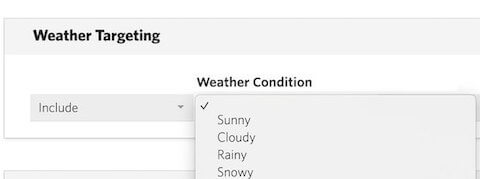
Traditional out-of-home advertising spans highway billboards, movie posters in subway systems, taxi top promotions, and much more. These ads, however, are increasingly turning digital, with digital out-of-home's share in the global out-of-home ad market value reaching 33% in 2022 and DOOH ad revenues surpassing an estimated $13 billion in 2023.
It’s not just traditional advertising platforms integrating DOOH ads. While billboard companies like Lamar and Clear Channel are moving digital, non-traditional publishers are monetizing their digital screens. For instance, TouchTunes inserts ads into their digital jukeboxes and Xevo monetizes their in-car dashboards. Any digital screen has the potential to monetize with ads.

In this article, we discuss what DOOH ads are, how to implement them, and why they are beneficial.
Digital out-of-home (DOOH) ads is a term broadly encompassing digital screen advertising outside of computers and mobile devices, including digital billboards, digital signage, ads on IOT devices, and more. These ads can be public-- like highway billboards, but could also be private (even in-home), such as ads within your Keurig’s digital screen. Traditional and non-traditional publishers alike use DOOH ads, including:


Why exactly you monetize depends on if you are a traditional or non-traditional DOOH publisher. Lamar’s company, for instance, hinges on selling ad space, making them a traditional publisher. Their DOOH ads monetization impetus is:

The digital disadvantage is mainly the high cost of transitioning in bulk to digital screens. Digital ads also require a new selling paradigm, which may unfortunately upend your workforce. Finally, powering these screens has incremental energy costs over the one-time cost of adding/removing paper ads.
Meanwhile, “non-traditional” DOOH publishers are companies that don’t need ad revenue to monetize, but want new revenue streams. Often, these companies fall under the “internet of things” bucket. Whirlpool, for instance, could insert ads for food-related CPG items within their refrigerator’s smart screens.
Such brands should turn to ads mainly for incremental revenue. These DOOH ad formats are the next frontier in advertising, and advertisers pay premiums to reach such audiences in engaging experiences. In fact, online advertising pain points are DOOH ad advantages. For example:
The difficulty for non-traditional publishers is ads potentially hurting user experience. Nobody wants to wake up to their Keurig machine flashing an irrelevant movie promotion. That highlights the importance of ads native to the user experience, such as Whirlpool’s ads being sponsored food items within recipes on their smart screen. Finding ways to seamlessly integrate ads without disrupting the user’s product experience is paramount.
Unsurprisingly, DOOH ad targeting options are limited compared to standard digital advertising, predominantly around the use of first-party data and intent.
Many publishers personalize ads using data they have on consumers, such as their browsing experience and demographics (household income, workplace, etc). Thousands of people pass traditional digital billboards a day; there’s no way to personalize those ads in real-time without engaging in facial recognition (which still only provides limited targeting ability).
Additionally, many publishers with search results - like eBay, Amazon, etc - monetize by letting advertisers promote their products for relevant searches (like “new shoes”). This intent-based targeting is highly valuable, but with DOOH advertising, there’s little knowledge of passerby’s thoughts or intentions.
(The exception to this would be personal IOT devices. Using the Whirlpool example, the smart fridge may over time understand that owner’s behavior and tailor ads as such).
However, there are targeting options that DOOH publishers can offer, including:


Even if you can’t identify your audience in real-time, you can target their surroundings. Target based on location, weather, and more to show the right ad at the right time.
The DOOH ad tech space is rapidly growing, with plenty of existing DOOH ad exchanges providing instant access to advertisers willing to buy your DOOH inventory.
By necessity, these exchanges operate under server-side models, compared to the plug-and-play, client-side SDKs, and ad tags of traditional ad servers/exchanges. Generally integration involves hooking your in-house content management system to their ad system.
For traditional DOOH publishers, these ad exchanges could be a valuable first-step to finding demand and earning revenue, especially if your screens follow standard DOOH ad formats, such as rectangular billboards or other signage. Such ad units can be streamlined and sold programmatically.
That said, the downsides to sourcing all demand through an ad exchange include: